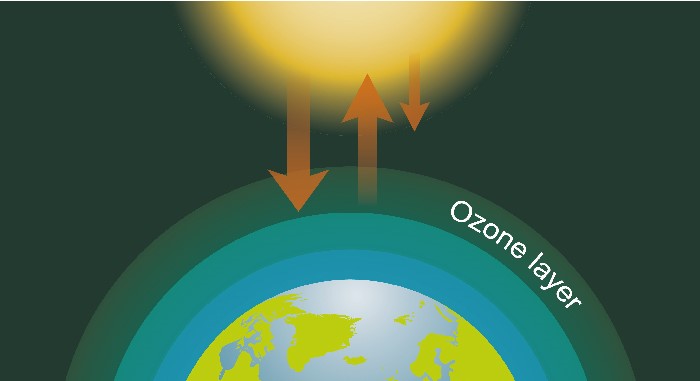The ALFA-X (which stands for Advanced Labs for Frontline Activity in rail eXperimentation) will become the world’s fastest bullet train when it enters service in 2030. It’s capable of hitting speeds of up to 400kph — 80kph more than the current generation of Shinkansen trains.
The train’s ten carriages have a number of features to help cope with the increased velocity, including air brakes on the roof, and magnetic plates positioned near the rails that will help them decelerate.
But the ALFA-X’s most eye-catching feature is its elongated nose, an exaggerated version of Nakatsu’s 1997 design. Engineers are testing both 16- and 22-metre long versions of the nose during three years of night-time trials between the cities of Aomori and Sendai, which commenced last week.
The nose is designed to combat side effects of what engineers call the ‘piston effect,’ caused by trains pushing air through tunnels as they enter. "It’s like a piston going into its cylinder," explains David Soper, a lecturer in vehicle aerodynamics at the University of Birmingham’s Centre for Railway Research and Education. "As the train enters into the tunnel it sets up pressure waves – it comes down to train shape, length, and speed."
You may have experienced the piston effect on the London Underground, where it pushes blasts of warm, dry air down the platforms. This offers blessed relief for sweaty commuters, but at higher speeds it can have disastrous effects. Freight services roaring through passenger stations have been known to drag prams and wheelchairs onto the tracks, and doors in tunnels can be sucked open by the force of passing trains.
As trains leave a tunnel, the sudden pressure drop can create micro-pressure waves. In the 1970s, Japan's Shinkansen created problems with cracked windows on nearby houses, and sonic booms that could be heard up to 400 metres away. "The reason for the 'odd' nose shapes is to decrease the gradient of a pressure wave which is created as a train enters into a tunnel, with a view to decreasing micro-pressure wave emission at the tunnel exits," says Soper.
The flatter the front of the train, the quicker a pressure wave builds up in the tunnel, creating a bigger change in pressure when it exits. The ALFA-X design seeks to minimise this by reducing the cross-sectional area at the front of the train, meaning it takes longer for the pressure wave to build up to begin with. The ideal nose shape would actually be a half-sphere, but practical constraints – like having somewhere for the driver to sit – make this difficult.
Changing the shape of the trains is not the only way to combat this problem. The simplest solution is to simply slow down a little when approaching a tunnel. Otherwise, track designers can build ‘entry portals’ to their tunnels. "Imagine a trumpet-like flare at the front of the tunnel," says Alan Vardy, of the University of Dundee. But in Japan, where high-speed trains pass through mountainous areas, there often isn’t enough space between tunnels for this approach to work, and slowing down so often would have a detrimental effect on journey times.
The other issue is that trains run in both directions, and the best shape at the entry to a tunnel would actually exacerbate the problem at the other end – where a series of holes are required to help dissipate micro-pressure waves. Think of a recorder, rather than a trumpet.
Vardy also points out that the sonic boom issue isn’t just because trains are going faster – it began to arise when the floors of tunnels were built with concrete slabs, rather than the loose gravel and ballast employed on the rest of the railway network.
Reduced noise is not the only benefit of the ALFA-X’s strange shape. "We want to improve not only speed, but also safety and comfort," said Ichiro Ogawa, the head of the East Japan Railway Company’s research and development centre, when the prototype was unveiled.
There are general aerodynamic benefits from the long nose that can help reduce the effect of sidewinds, and make the train more efficient by reducing drag. In Europe, Bombardier was able to achieve energy savings of 20 per cent by using computer modelling to improve the design of one of its trains.
The shape can also make journeys more comfortable for passengers. Big pressure changes outside the train can have an effect in the carriages themselves, particularly where there’s not much clearance between the top of the train and the roof of the tunnel. This is why your ears sometimes pop when travelling through tunnels at high speed.
At Birmingham, Soper is part of a team using sophisticated technology to model how different shapes change the pressure waves created by trains. They’re working on preventing the flat faces of freight trains from impacting passengers waiting on platforms, using computer simulations and computational fluid dynamics (CFD) to make predictions about what designs might work best, and scale models to confirm their results.
Birmingham’s Transient Railway Aerodynamics Investigation (TRAIN) Rig fires model trains through stations and tunnels at speeds of up to 80 metres per second, but it’s the computer simulations that are key. "We would never have finished up with the same shapes," without CFD, says Vardy.
Unless someone actually builds a global network of connected vacuum tubes, the importance of aerodynamics is only going to increase. "As you try and increase the train speed, the aerodynamic issues become the main barrier to achieving those high speeds," Soper says.

In the 1990s, engineer Eiji Nakatsu drew inspiration for a redesign of Japan’s high-speed bullet train from the slender profile of a kingfisher’s beak. Its latest iteration looks like a quite different part of the anatomy.




